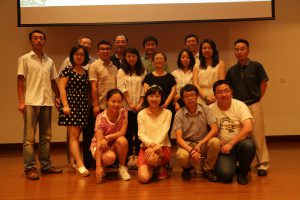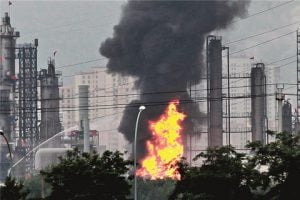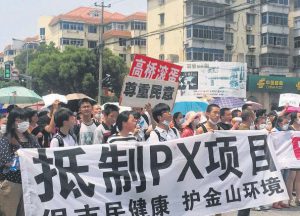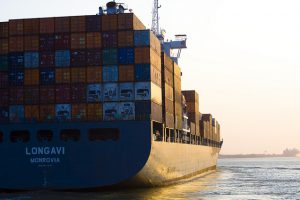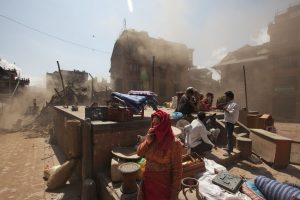An anti-corruption investigation in Chengdu has heightened tensions over a controversial petrochemical plant in Sichuan province amid central government reforms of the widely-discredited and graft-prone environmental impact assessment (EIA) process.
Controversy over the partially-built project dates back to 2007, when Sichuan’s local government granted an EIA and lobbied central government intensely to get the go-ahead for the project near Pengzhou, a small industrial city in greater Chengdu.
Ultimately, the central government, through the Ministry of Environmental Protection (MEP), granted ‘conditional’ approval to project.
But in 2012, a crackdown on corruption in Chengdu saw a number of officials once in charge or associated with the Pengzhou plans removed from office.
Now, it may not be possible for Sichuan’s government to cancel the project, despite widespread scepticism the Pengzhou site is suitable for such a facility.
To date, over 5 billion yuan (around US$800 million) has been spent on the project.
According to an official involved in the EIA process for the Pengzhou plant, a terrible example has been set: if a petrochemical complex can be built there, a similar facility could be built almost anywhere in China, and approval could be obtained just by saying the right things.
Another official, Mu Guangfeng, who previously worked at the State Environmental Protection Administration (SEPA, now the MEP), was tasked with assessing the environmental impact of regional development plans.
Eight years ago, he accompanied a group of experts to the proposed petrochemical development at Pengzhou.
“I took one look – how could they think about building it there? It was a joke. First, you can’t build [a petrochemical plant] at the head of a river. Second, you can’t build it on floodplains. Think about what that’s going to cost!”
So why was Pengzhou earmarked for a petrochemical complex in the first place? The usual reply is that in 1988, provincial authorities used Sichuan’s strategic position in the south-west to justify the import of crude oil and construction of ethylene plants and oil refineries – industries that part of China previously lacked.
At National People’s Congresses, the province’s representatives repeatedly proposed petrochemical construction, while some projects were written into Five-Year Plans.
The area surrounding Chengdu (including Pengzhou) lies on the middle and upper reaches of the Min and Tuo rivers, on plains known since ancient times for their irrigation systems and self-sufficiency. But the plains are surrounded by mountains and tend to be cloudy and windless – meaning pollutants there don’t disperse, which has led to worsening air and water pollution problems.
The flood plains chosen for the petrochemical project, in the town of Longfeng, part of the city of Pengzhou, are an important part of Chengdu’s environmental buffer zone.
Former SEPA experts say they repeatedly pointed out in environmental impact assessments, investigations, circulars and letters of reply, that the Longfeng site is not only often upwind of both Pengzhou and Chengdu, but that it also lies on the alluvial delta of the Tuo river.
As the banks of the river are home to many businesses and densely populated, the river’s ecosystems aren’t able to deal with large new development. The site in Pengzhou, therefore, was unsuitable and had not been scientifically selected.
One official involved in the EIA process said the environmental authorities – weak, and in a difficult position – had done everything they could.
“The local government treated it like a battle to be won, with officials stationed in Beijing for extended periods to lobby for the project. It didn’t matter what conditions were set, they’d always promise to meet them. When problems were raised, the (provincial) government would each time come up with a policy and promise to resolve the issue by a certain deadline. They just wanted approval and didn’t care whether or not they could fulfil their commitments.”
Backers of the project stress how important the refinery will be for the local economy, describing the potential boost to economic growth as well as assurances that high-tech, high-cost environmental protection measures will be put in place.
For example, addressing concerns about groundwater pollution, Liu Yongqi, senior engineer with the Sichuan Academy of Environmental Sciences, said builders had taken strict measures and provided strong guarantees to prevent pollution seeping into groundwater.
This is contested by many experts. Liu Xiang of Tsinghua University says groundwater pollution from petrochemical plants is inevitable – as existing technology cannot prevent it, and once groundwater is polluted, it is effectively impossible to clean up.
An appendix to the Pengzhou’s plant’s EIA described the possible harm: “If a worst-case scenario were to occur, the environmental risk from toxins, including benzene and hydrogen sulphide, would affect an area of up to 21.2 square kilometres and require the emergency evacuation of over 130,000 residents, placing 56,500 at risk of severe poisoning (within the 50% lethal dose radius).”
But none of the experts at a hearing held by the Pengzhou city government communicated any of this to the public.
Why Pengzhou?
After repeated debate and argument among expert groups, the central government gave ‘conditional’ approval to EIA reports.
This was despite SEPA being strongly opposed to petrochemical development on the Tuo river – which was already badly polluted.
“Why Pengzhou? At the time, I was told that plot had been set aside for industrial development for so long it had to be used, or the locals would have objected,” said Zhu Xingxiang, then head of SEPA’s EIA department, and the man who signed off on the EIA report.
In 2013, Xiang Dong, head of the investor services office of the Chengdu Petrochemical Complex Management Committee, said that “we just know it (the decision) was for ‘strategic’ reasons. In environmental terms, the other option, Jintang, was better.”
Xiang says the choice of Pengzhou as the project site wasn’t made by either the Sichuan or Chengdu governments, or the China National Petroleum Corporation (CNPC), much less the Pengzhou county government. Nor was it changed to reflect MEP recommendations.
“The MEP had a strong preference for Jintang,” Xiang said, “but must have had good reasons for ultimately approving Pengzhou. However we don’t know what those reasons were.”
According to Xiang, officials with a CNPC subsidiary, CNPC Sichuan Petrochemicals, even said they would rather have built in Jintang, where environmental protection measures are cheaper. And yet the selection of Pengzhou has meant huge spending, even taking measures beyond those required by the relevant standards.
Early this decade, Wang Wenbin, former head of the Chengdu Environmental Protection Bureau, told this newspaper the “environmental assessment process for Pengzhou was very strict, and there won’t be any pollution to speak of after completion.”
Prior to that, he had spoken consistently to this newspaper about the air and water pollution pressures the city was under.
Before his change of tune, Wang explained that conditions for dispersal of pollutants in Chengdu were poor, that the city relies on artificial rain to keep air quality up to standard – and uses this method 50 or 60 times each year.
Then in June 2012, Wang was admitted to hospital for depression, and passed away in September. Subsequently, a major corruption crackdown in Chengdu left CNPC badly wounded, and a number of officials once in charge or associated with the Pengzhou plans fell from power.
Among those, Dai Xiaoming, former head of the Chengdu Industry Investment Group, Li Chuncheng, the city’s former Party secretary, and Jiang Jiemin, former CNPC boss, all found themselves under investigation. In October 2013, there was a low-key change of leadership at CNPC Sichuan Petrochemical.
The question now is what will be done in Pengzhou.

